Introduction
Luxor, located along the Nile River in southern Egypt, is often described as the world’s largest open-air museum — and for good reason. The city is home to magnificent temples, royal tombs, statues, and monuments that span thousands of years of history.
For travelers, Luxor is more than just a stop on an itinerary; it is a journey into the era of the pharaohs, where stories of power, spirituality, and artistry are carved into stone. From the vast Karnak Temple complex to the hidden treasures of the Valley of the Kings, every corner of Luxor offers a glimpse into ancient grandeur. Whether it’s sailing on the Nile, exploring colossal temples, or watching the sun set behind desert cliffs, Luxor provides experiences that linger long after the journey ends.
History
Ancient Thebes – Capital of the New Kingdom
In ancient times, Luxor was known as Thebes, the capital of Egypt during the New Kingdom (c. 1550–1070 BCE). It served not only as a political center but also as a spiritual hub dedicated to the worship of Amun-Ra, the chief deity of the era.
Grand temples such as Karnak and Luxor Temple were built to honor the gods and to reinforce the divine authority of pharaohs. On the city’s West Bank, the Valley of the Kings became the royal necropolis, where rulers were laid to rest in richly decorated tombs filled with treasures to guide them into the afterlife. The most famous discovery here is the tomb of Tutankhamun, unearthed almost intact in 1922.
Luxor in Greco-Roman Times
When Alexander the Great conquered Egypt in 332 BCE, Luxor remained a city of significance. The Greeks and Romans adapted the temples, blending their own traditions with Egyptian beliefs. Portions of the Luxor Temple were even converted into Roman sanctuaries, leaving behind a unique fusion of cultures.
Luxor in the Islamic Era
During the rise of Islam in the 7th century CE, Luxor evolved once again. Mosques were built, and some ancient structures were repurposed for new uses. This period added another layer of history to the city, where Islamic culture intertwined with monumental ruins.
Luxor in Modern Times
European explorers and archaeologists revived global interest in Luxor during the 18th and 19th centuries. The deciphering of hieroglyphs by Jean-François Champollion and the excavations of tombs and temples brought Luxor into the spotlight. Today, it stands not only as one of the most important archaeological sites in the world but also as a thriving modern city that welcomes millions of visitors each year.
Geography and Location
Luxor lies about 670 kilometers south of Cairo along the Nile River. The city is divided naturally into two parts:
-
East Bank:
-
The modern heart of the city features markets, hotels, restaurants, and monumental temples like Karnak and Luxor Temple.
-
West Bank:
-
Known as the “City of the Dead,” this area is home to tombs and mortuary temples, including the Valley of the Kings and the Temple of Hatshepsut.
In ancient Egyptian belief, this division carried deep symbolism: the east, where the sun rises, represented life and rebirth, while the west, where the sun sets, symbolized death and the afterlife.
Luxor has a hot desert climate, with very high temperatures in summer. The best time to visit is from October to April, when the weather is cooler and ideal for sightseeing.
Cultural Significance
Luxor is more than a collection of archaeological sites; it represents the cultural and spiritual heart of ancient Egypt. For centuries, it was a city where power, religion, and artistry converged, shaping not only Egypt’s history but also the world’s understanding of civilization.
A Center of Religion and Rituals
During the New Kingdom, Luxor became the main center of worship for Amun-Ra, the most powerful deity of the time. Temples served as sacred spaces for the gods, where priests performed daily rituals to maintain harmony between the divine and earthly realms.
Festivals were also central to Luxor’s identity. The Opet Festival, for instance, was one of the city’s grandest events. Statues of gods were carried in processions between Karnak and Luxor Temple along the Avenue of the Sphinxes, reinforcing the bond between the gods and the pharaoh.
Art, Architecture, and Language
The temples and tombs of Luxor also reveal the artistic genius of ancient Egypt. Every surface — from temple walls to tomb ceilings — was adorned with hieroglyphs, carvings, and colorful paintings. These works told stories of gods, rulers, and the afterlife, preserving both spiritual beliefs and historical records.
Architectural marvels such as the Great Hypostyle Hall at Karnak or the terraces of Hatshepsut’s Temple demonstrate the Egyptians’ mastery of scale and symbolism. Each structure was designed not only for beauty but also to express divine power and royal authority.
A UNESCO World Heritage Site
In 1979, UNESCO recognized the city’s global importance by designating Ancient Thebes with its Necropolis as a World Heritage Site. This protection includes both the East and West Banks, ensuring that Luxor’s monuments are preserved for generations to come. Today, the city is celebrated as one of the most significant cultural landscapes in the world.
Main Tourist Attractions
The attractions of Luxor are divided between the East Bank, home to temples and the modern city, and the West Bank, where tombs and funerary monuments dominate the landscape.
East Bank Highlights
Luxor Temple
Located in the city center, Luxor Temple is one of Egypt’s most remarkable landmarks. Built during the reign of Amenhotep III and later expanded by Ramses II, it was primarily dedicated to the renewal of kingship rather than a single deity.
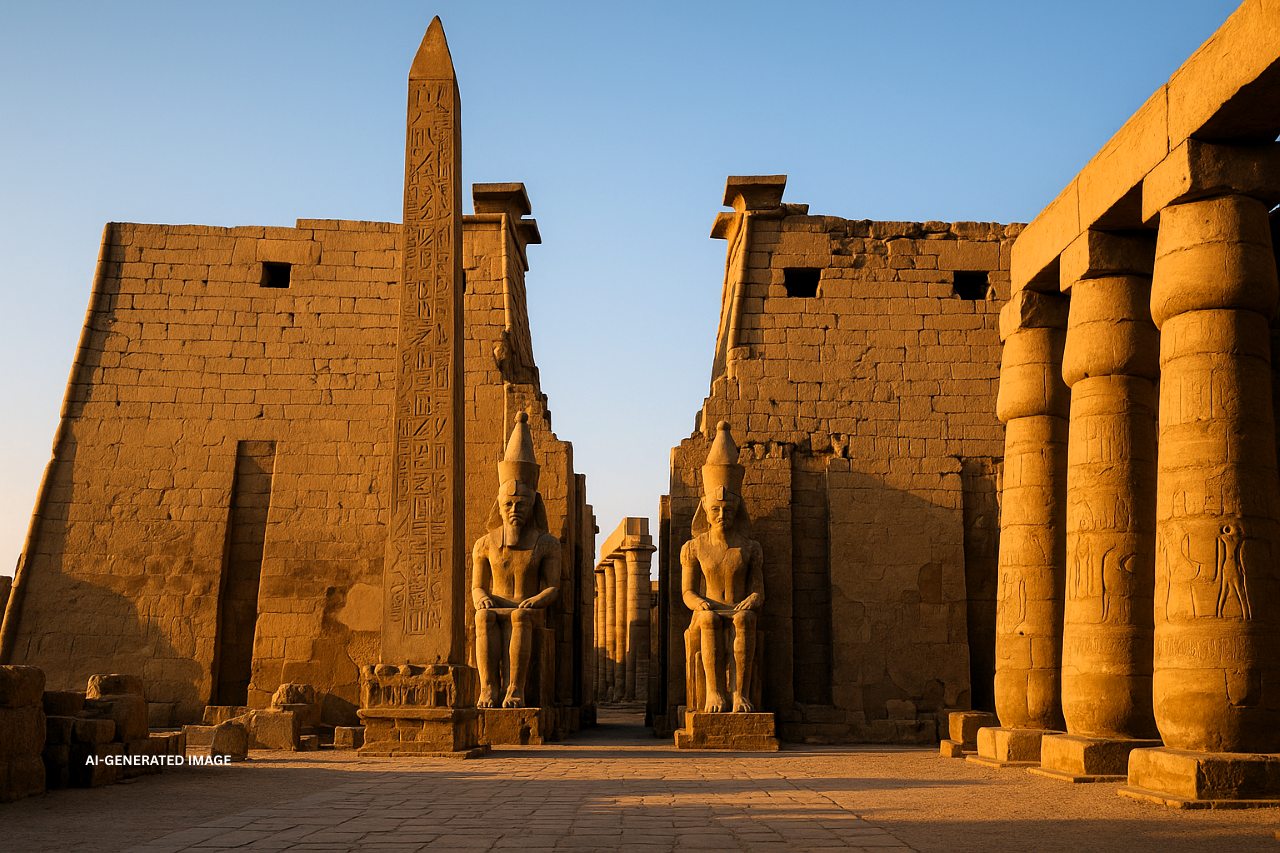
Massive statues of Ramses II guard the entrance, while the temple’s courtyards and colonnades showcase magnificent carvings. At night, when the temple is lit up, it becomes one of the most atmospheric sights in Luxor.
Karnak Temple Complex
Just north of Luxor Temple stands the Karnak Temple Complex, the largest religious site ever constructed. Dedicated mainly to Amun-Ra, it grew over centuries with contributions from many pharaohs.
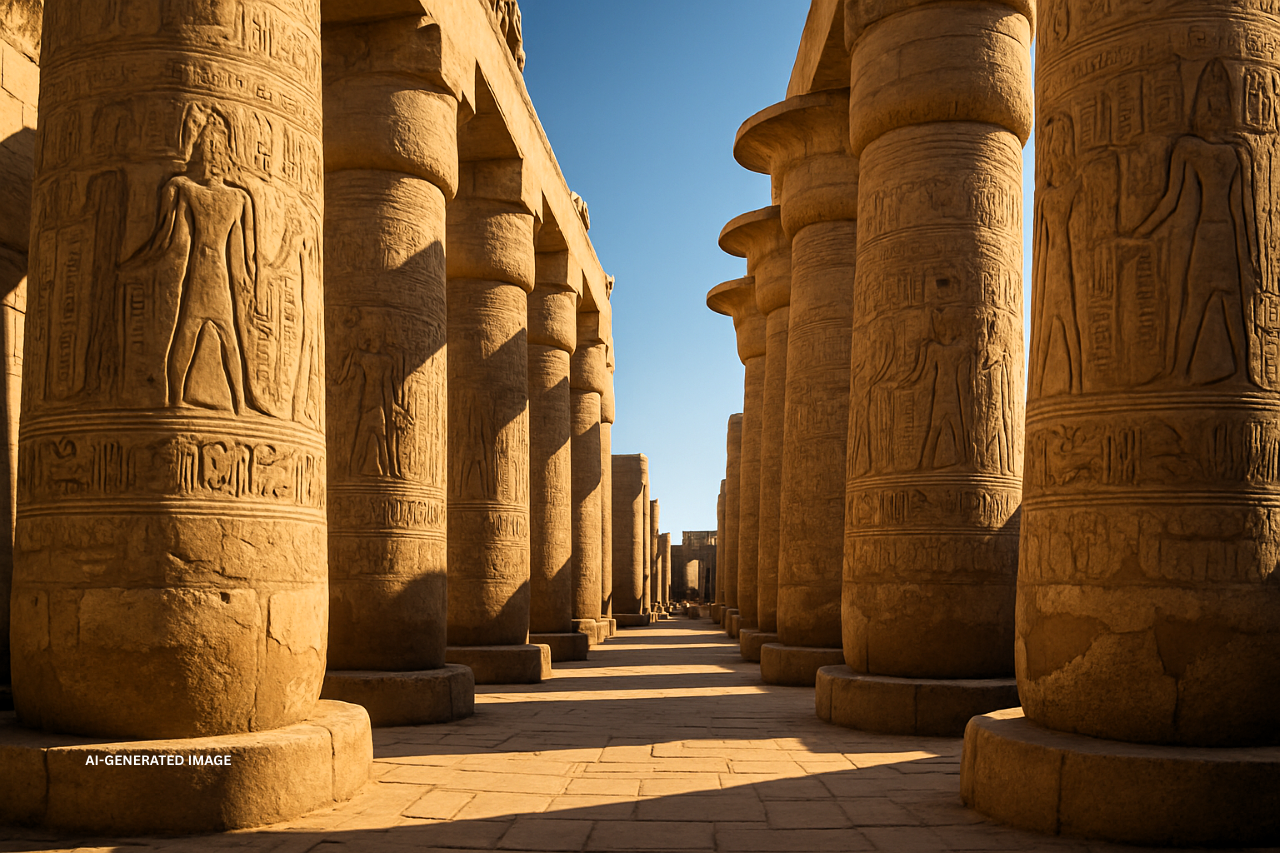
Its most iconic feature is the Great Hypostyle Hall, a forest of 134 colossal columns that create an awe-inspiring atmosphere. Obelisks, sacred lakes, and smaller shrines throughout the complex make Karnak one of the most impressive ancient sites in the world.
Avenue of the Sphinxes
Stretching almost three kilometers, the Avenue of the Sphinxes links Karnak Temple to Luxor Temple. This grand processional route, lined with hundreds of sphinx statues, was used during festivals such as the Opet Festival. Walking along the avenue today offers a glimpse into the pageantry of ancient religious life.
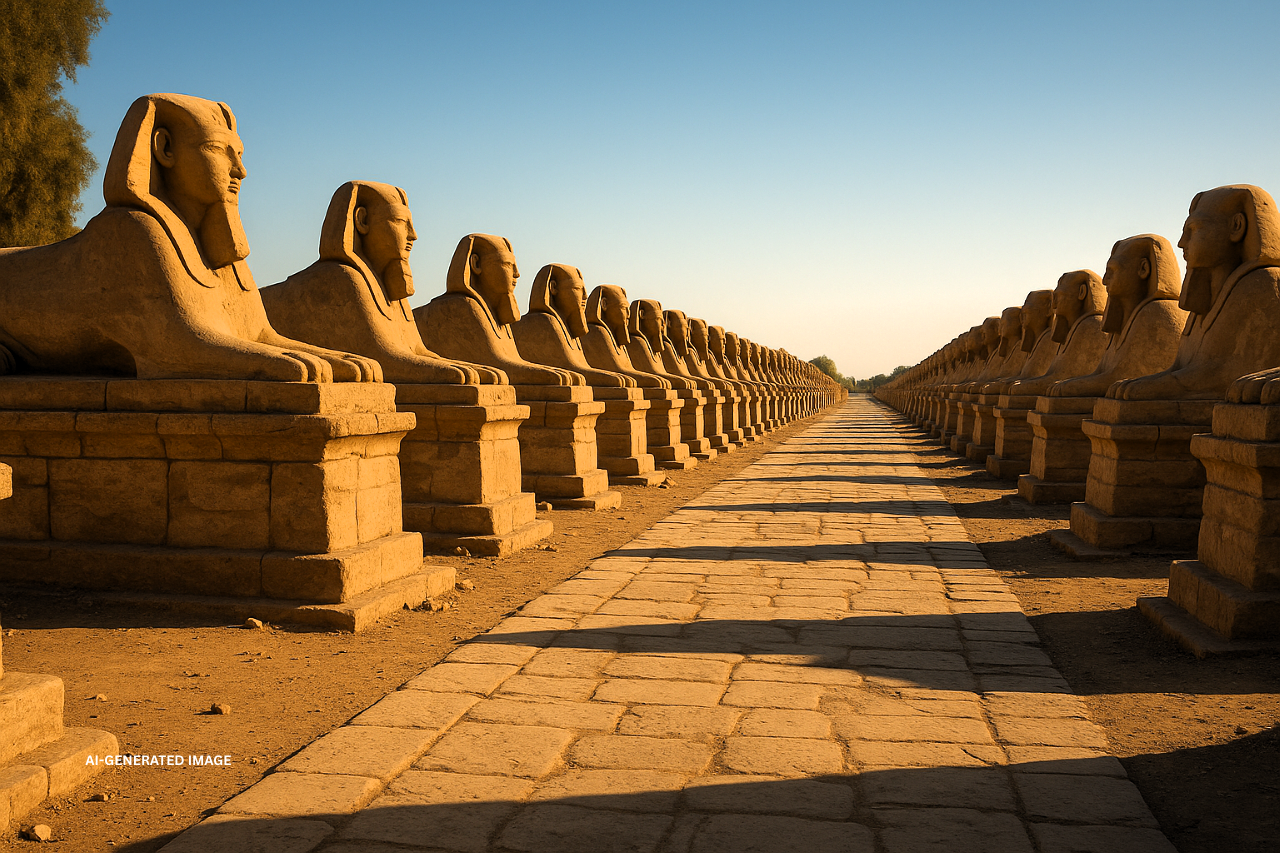
West Bank Highlights
Valley of the Kings
The Valley of the Kings is one of the most famous archaeological sites in the world. More than 60 tombs of pharaohs and nobles lie hidden within its cliffs, each decorated with texts and images to guide the deceased into the afterlife.

The most celebrated discovery is the tomb of Tutankhamun, unearthed in 1922 by Howard Carter. Though smaller than others, it remains iconic for its intact treasures, including the golden funerary mask now housed in Cairo.
Valley of the Queens
Nearby is the Valley of the Queens, where royal wives and children were buried. The most outstanding tomb belongs to Queen Nefertari, wife of Ramses II. Her burial chamber is renowned for its vibrant wall paintings, often described as some of the finest in ancient Egypt.

Temple of Hatshepsut (Deir el-Bahari)
Set dramatically against limestone cliffs, the Temple of Hatshepsut is one of Luxor’s most striking monuments. Built for Egypt’s most successful female pharaoh, its terraces, colonnades, and sanctuaries reflect both political ambition and architectural brilliance.
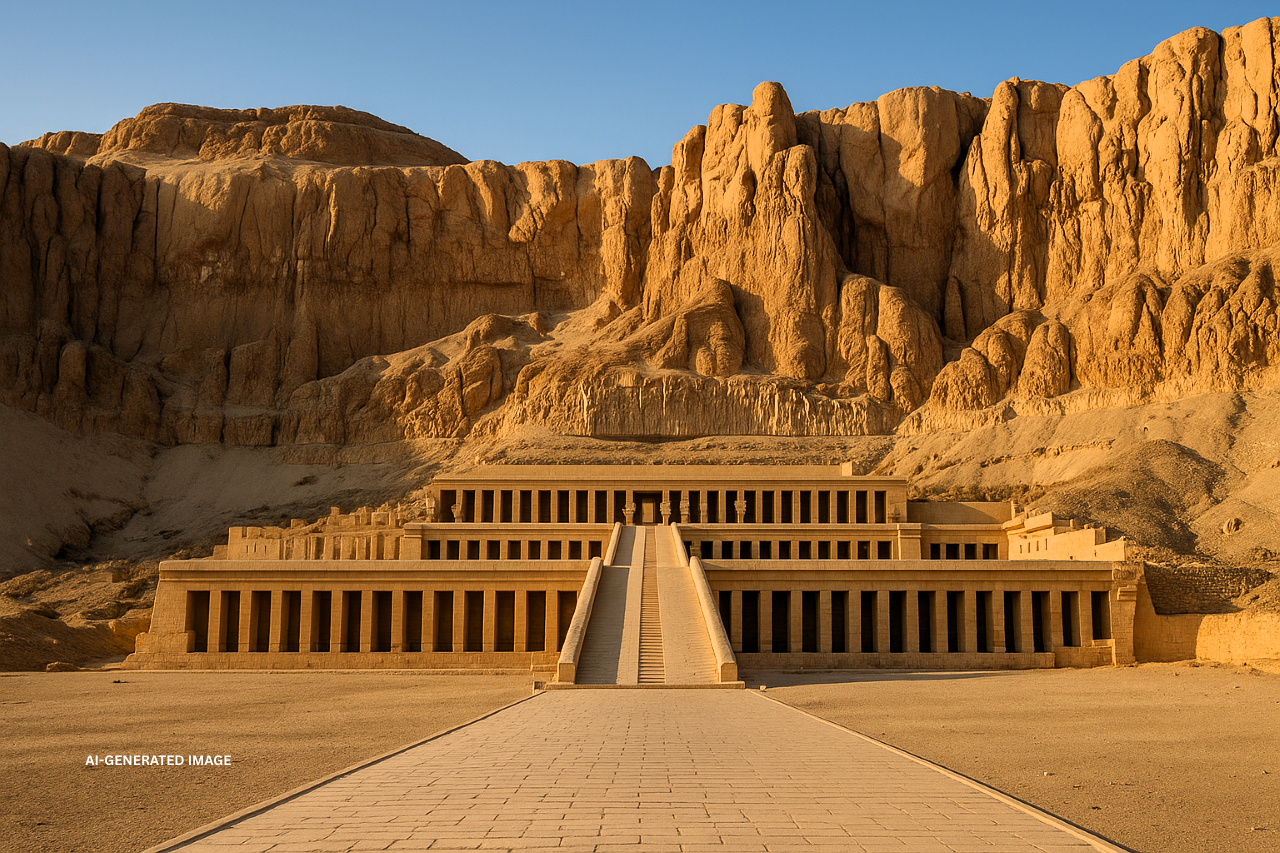
Colossi of Memnon
Standing at the entrance to the Theban necropolis are the Colossi of Memnon, two towering statues of Pharaoh Amenhotep III. Rising nearly 18 meters, these statues once flanked the entrance to his mortuary temple, much of which has been lost. Ancient travelers believed the statues “sang” at dawn due to cracks in the stone, adding a sense of mystery to their legend.
Medinet Habu
The Mortuary Temple of Ramses III, known as Medinet Habu, is another must-see site. Its well-preserved walls display detailed reliefs of military campaigns, including the king’s battles with the Sea Peoples. The temple complex is vast, providing a vivid picture of both religious practices and royal power.
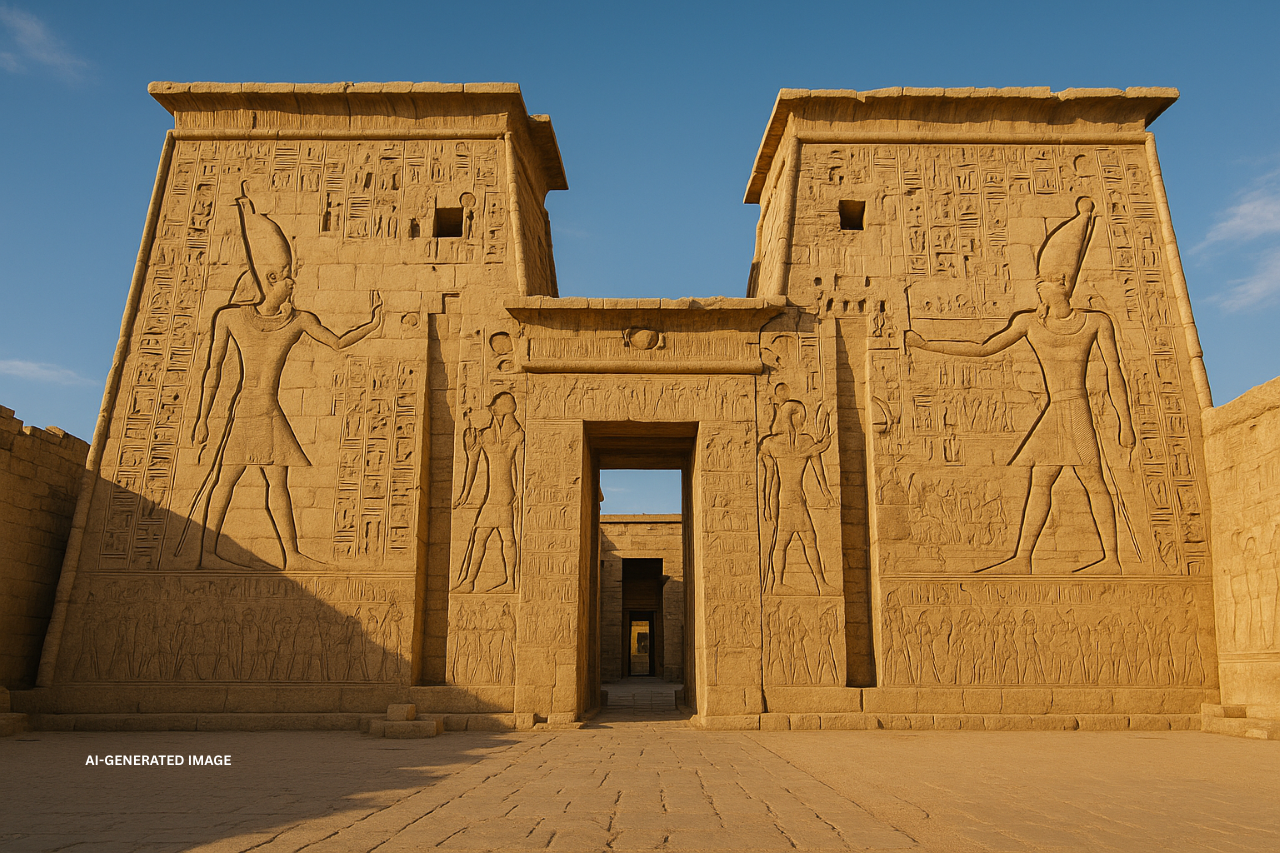
Museums and Other Attractions
Luxor Museum
The Luxor Museum houses a carefully curated collection of statues, jewelry, and royal mummies. Unlike the larger Egyptian Museum in Cairo, it offers a quieter and more focused experience, with objects displayed to highlight their artistry.
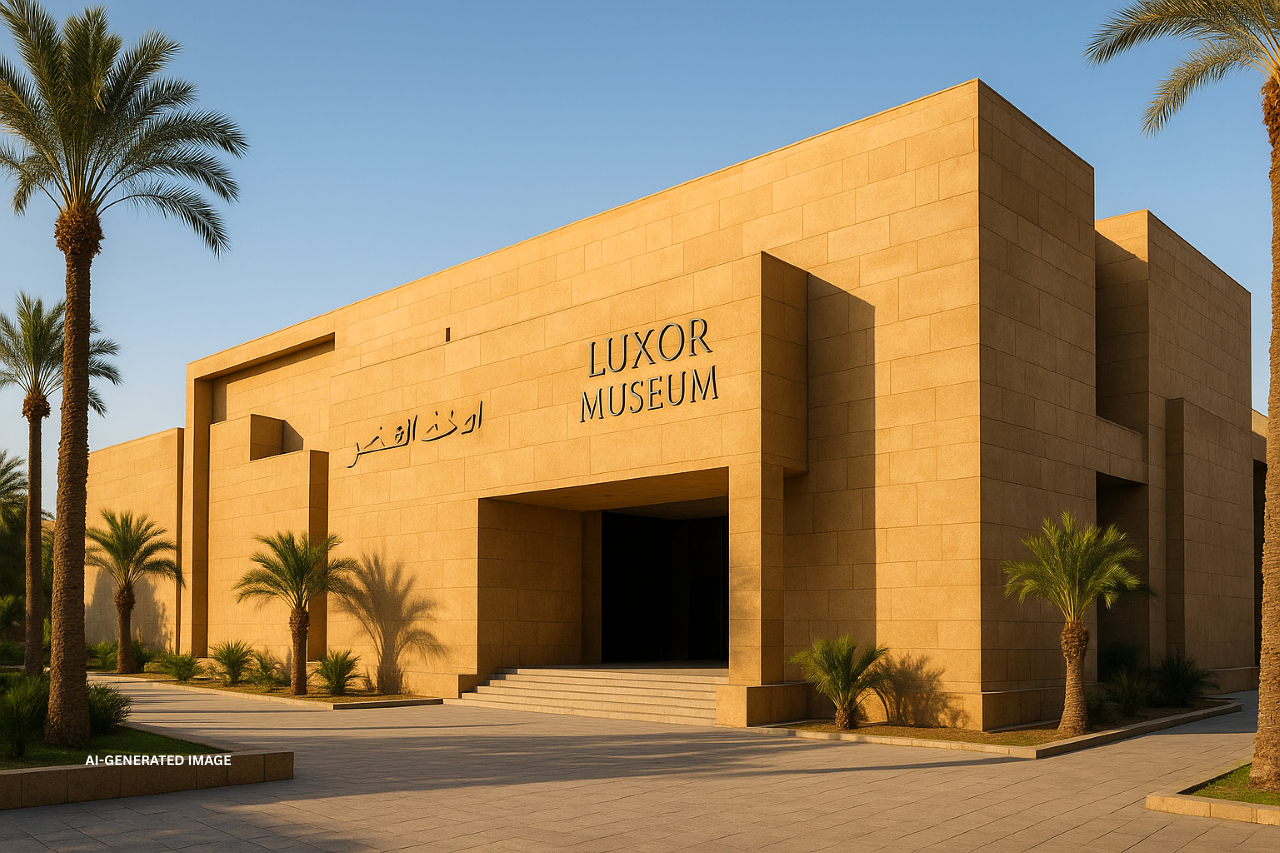
Mummification Museum
The Mummification Museum explores the fascinating process of embalming, a central part of ancient Egyptian belief in the afterlife. Exhibits include tools used by embalmers, mummified animals, and preserved human remains.
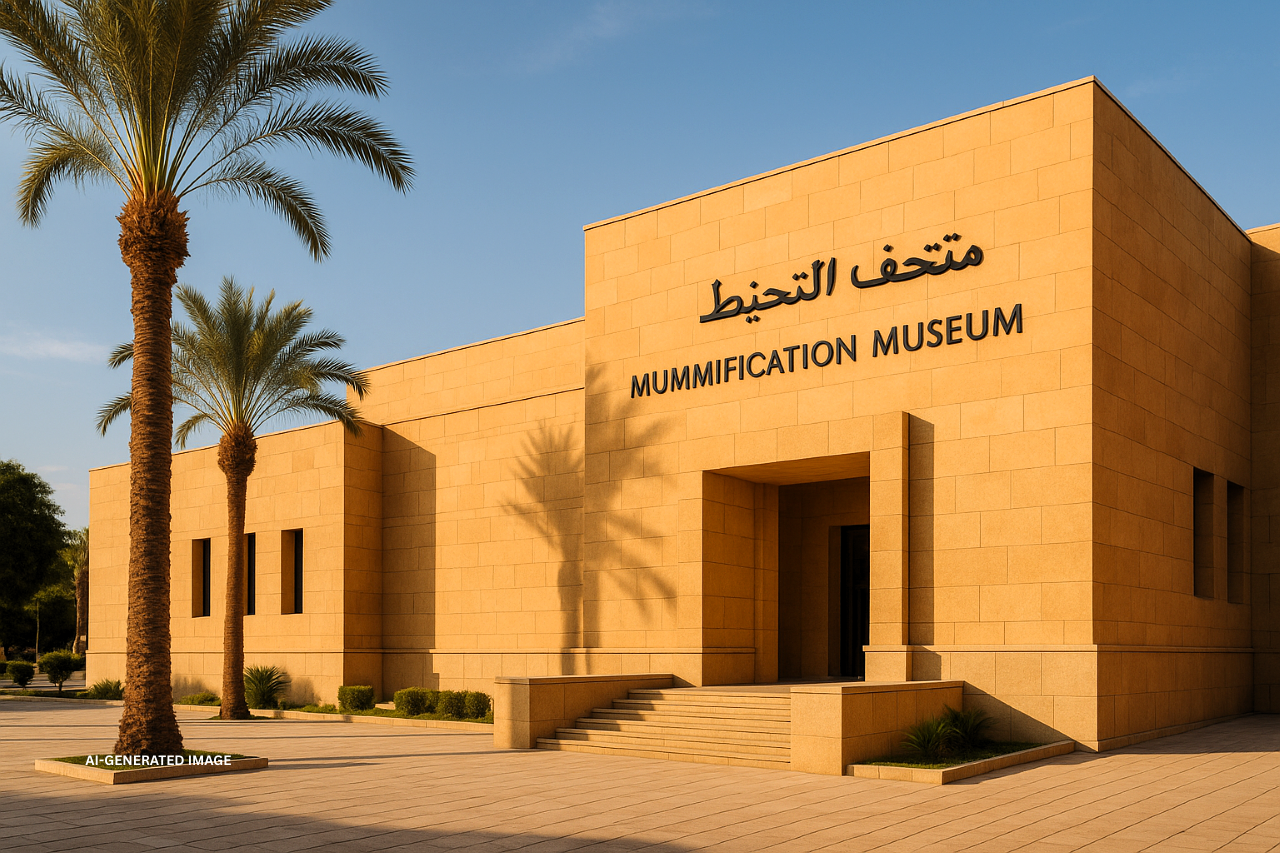
Local Bazaars and Souks
No visit to Luxor is complete without exploring its bustling souks. These markets are filled with papyrus art, alabaster carvings, jewelry, spices, and textiles. Beyond shopping, they provide an authentic glimpse into local life, where bargaining is both expected and enjoyable.
Things to Do Beyond the Monuments
Luxor is celebrated for its temples and tombs, but the city also offers unique experiences that let travelers enjoy its culture, landscapes, and modern charm. From river cruises to local markets, there are plenty of activities beyond the monuments.
Nile River Cruises
The Nile River has always been Egypt’s lifeline, and one of the most rewarding ways to experience Luxor is from the water. Multi-day cruises between Luxor and Aswan combine luxury with history, stopping at important temples such as Edfu and Kom Ombo. These cruises allow visitors to relax while discovering treasures along the riverbanks.
For those with less time, a felucca ride at sunset is equally magical. The sight of the sun dipping below the horizon, casting golden reflections on the Nile, is one of Luxor’s most enchanting moments.
Hot Air Balloon Ride
A sunrise hot air balloon ride is among the most memorable experiences in Luxor. Floating gently above the West Bank, passengers are treated to breathtaking views of temples, tombs, and the lush Nile Valley. From above, the contrast between fertile farmland and barren desert cliffs becomes even more striking, offering a perspective unlike any other.
Traditional Souks and Handicrafts
Luxor’s souks (markets) provide an authentic glimpse into local life. Stalls are filled with handmade jewelry, papyrus scrolls, alabaster carvings, spices, and textiles.
Bargaining is expected and can be part of the fun, but it’s best to do so politely. Shopping in these lively markets is not just about souvenirs — it’s a cultural experience that connects visitors with the daily rhythms of Luxor.
Cultural Performances
Evenings in Luxor can be just as fascinating as daytime explorations. Sound and light shows at Karnak and Luxor temples use dramatic lighting, narration, and music to bring ancient history to life.
Travelers can also enjoy traditional dance and music performances, including Nubian shows, belly dancing, and whirling dervishes, often hosted at hotels or cultural venues. These performances highlight the diversity of Egypt’s living traditions.
Travel Guide
Planning ensures a smoother, more enjoyable trip. Here are some essential tips about timing, transportation, accommodation, and dining.
Best Time to Visit
Luxor’s desert climate means hot summers and mild winters. The best time to visit is from October to April, when the weather is cooler and ideal for sightseeing.
-
Winter (December–February):
-
Comfortable temperatures but larger crowds.
-
Spring (March–April):
-
Warm days with fewer tourists and colorful landscapes.
-
Summer (May–August):
-
Extremely hot, often above 40°C (104°F), making sightseeing difficult.
-
Autumn (September–October):
-
Temperatures begin to drop, offering another good season for travel.
How to Reach
Luxor is well-connected and easy to reach from Cairo and other cities:
-
By Air:
-
Luxor International Airport offers flights from Cairo to some international destinations.
-
By Train:
-
Overnight trains from Cairo and Giza provide budget and sleeper-class options.
-
By Road:
-
Luxor can be reached by car or bus from Aswan or Hurghada.
-
By Nile Cruise:
-
Many travelers combine transportation with sightseeing on cruises starting or ending in Luxor.
Accommodation
Luxor offers a wide range of places to stay:
-
Luxury Hotels:
-
The East Bank has iconic properties like the Sofitel Winter Palace, famous for hosting royalty and explorers.
-
Mid-Range Hotels:
-
Comfortable hotels located near Luxor Temple or along the Corniche.
-
Budget Guesthouses:
-
Family-run guesthouses on the West Bank provide affordable stays and warm Egyptian hospitality.
👉 The East Bank is ideal for those who want easy access to shops and city life, while the West Bank is quieter and closer to archaeological sites.
Local Cuisine and Dining
Food in Luxor is both flavorful and diverse. Some traditional dishes to try include:
-
Ful Medames:
-
Stewed fava beans with garlic, lemon, and olive oil.
-
Koshari:
-
A hearty mix of rice, pasta, lentils, and chickpeas topped with tomato sauce and crispy onions.
-
Molokhia:
-
A green soup made from jute leaves, usually served with bread or rice.
-
Grilled Meats:
-
Kebabs and kofta are popular in restaurants and street stalls.
-
Desserts:
-
Basbousa (semolina cake) and konafa (shredded pastry with cream or nuts).
Refreshing drinks such as sugarcane juice and hibiscus tea are widely available and perfect after a hot day of sightseeing. Nile-side restaurants offer both local and international dishes with stunning views of the river.
Practical Travel Tips
Traveling to Luxor can be a life-changing experience, but being well-prepared makes it even more enjoyable. Here are some essential tips to help you make the most of your visit.
Language and Communication
Arabic is Egypt’s official language, but English is widely spoken in Luxor, especially in hotels, restaurants, and major tourist sites. Many guides and vendors also speak other languages such as French, German, or Spanish.
Learning a few Arabic phrases can make interactions friendlier:
-
Marhaba = Hello
-
Shukran = Thank you
-
Bikam? = How much?
-
Aiwa / Laa = Yes / No
Even using simple words shows respect for local culture and often leads to warmer hospitality.
Currency and Costs
The currency in Luxor is the Egyptian Pound (EGP). Credit cards are accepted in larger hotels and restaurants, but cash is more common in markets, taxis, and smaller shops.
-
ATMs are available throughout the city.
-
Bargaining is part of the culture in souks and with local vendors. Start low but remain polite.
-
Compared to many global destinations, Luxor offers excellent value for accommodation, food, and transportation.
Safety and Etiquette
Luxor is regarded as one of the safest cities in Egypt for tourists. Still, a few precautions can ensure a smooth trip:
-
Stay hydrated and always carry bottled water.
-
Wear sunscreen, sunglasses, and light clothing to protect against the desert sun.
-
Dress modestly, especially in rural areas or religious sites. Loose, cotton clothing works best.
-
Politely decline if approached by overly persistent touts.
-
Traffic can be unpredictable — be careful when crossing streets.
Guided Tours vs. Independent Exploration
Many visitors wonder whether they should hire a guide.
-
Guided Tours:
-
Licensed Egyptologists provide expert knowledge, helping you understand the stories behind each monument. They are especially valuable at complex sites like Karnak and the Valley of the Kings.
-
Independent Travel:
-
Offers flexibility to explore at your own pace. However, without background information, some details may be overlooked.
👉 The ideal option for most travelers is a mix of both — book guided tours for major sites, and spend free time enjoying markets, museums, and riverside walks on your own.
Special Interests
Luxor appeals to a wide variety of travelers, whether they are drawn to history, photography, or family adventures.
For Archaeology Enthusiasts
Luxor is often described as an archaeologist’s dream. Excavations are ongoing, and discoveries are regularly announced, reminding the world that much of Luxor’s history remains hidden beneath the sand. Visitors may even come across active dig sites, offering a rare chance to witness history in the making.
For Photography Lovers
With its golden sunsets, monumental architecture, and vibrant local life, Luxor is a paradise for photographers.
-
Best for Sunrise:
-
Hot air balloons floating above the West Bank.
-
Best for Sunset:
-
Feluccas drifting on the Nile.
-
Best for Architecture:
-
The Hypostyle Hall at Karnak or the terraces of Hatshepsut’s Temple.
-
Best for Quiet Shots:
-
The Colossi of Memnon at dawn before the crowds arrive.
For Family-Friendly Travel
Luxor can also be a rewarding destination for families with children, as long as the itinerary is well-planned.
-
Choose a few key attractions each day instead of trying to see everything.
-
Children often enjoy exploring the colorful wall paintings inside tombs.
-
The Mummification Museum is especially engaging for kids curious about science and history.
-
Nile boat rides are a fun and relaxing way to break up sightseeing.
For Religious and Spiritual Tourism
Luxor has long been regarded as a sacred place. Many temples were aligned with celestial events, symbolizing rebirth and eternity. Today, travelers often describe a sense of peace when meditating at Hatshepsut’s Temple or simply sitting by the Nile. For those seeking deeper meaning, Luxor offers not just history, but also spiritual inspiration.
Day Trips and Nearby Excursions from Luxor
Luxor itself offers endless opportunities for exploration, but its location along the Nile makes it an ideal base for visiting nearby treasures. Day trips from Luxor add variety and depth to any Egyptian journey.
Aswan and Abu Simbel
South of Luxor lies Aswan, a city known for its relaxed atmosphere, Nubian heritage, and picturesque Nile views. Highlights include the beautiful Philae Temple, dedicated to the goddess Isis, and the impressive Aswan High Dam.
From Aswan, many travelers venture further to the Abu Simbel temples, carved into a cliff by Ramses II. The massive statues at the entrance are among the most striking monuments in Egypt. Though it requires a longer journey, Abu Simbel is worth the effort for its scale and historical significance.
Dendera Temple Complex
Roughly an hour north of Luxor is the Temple of Hathor at Dendera, one of the best-preserved temples in the country. Its painted ceilings, astronomical carvings, and detailed reliefs make it a fascinating site, especially for those interested in mythology and astronomy. With fewer crowds than Luxor’s main temples, it offers a quieter, more immersive experience.
Edfu and Kom Ombo Temples
On the way to Aswan, two significant temples stand out:
-
Edfu Temple:
-
Dedicated to the falcon god Horus, this is one of the most complete temples in Egypt. Its towering pylons and inscriptions depict myths of Horus and his battles.
-
Kom Ombo Temple:
-
Unique for its double design, this temple is dedicated to two gods — Sobek, the crocodile deity, and Horus. The adjoining Crocodile Museum displays mummified crocodiles, offering a fascinating glimpse into local beliefs.
Exploring Villages and the Desert
For those seeking authenticity, trips into Luxor’s surrounding villages and desert areas provide a glimpse into local life. Camel rides, visits to traditional mudbrick houses, and tea with local families reveal a side of Egypt often overlooked by tourists. These excursions highlight the blend of ancient heritage and modern tradition that defines Luxor.
Conclusion
Luxor is more than a destination; it is a journey through the heart of ancient Egypt. From the monumental Karnak Temple and Luxor Temple to the hidden tombs of the Valley of the Kings, the city’s legacy stretches across millennia.
But the magic of Luxor goes beyond its monuments. A felucca ride on the Nile, a hot air balloon at sunrise, or an evening spent wandering the souks offers experiences that connect visitors to both the city’s past and its vibrant present.
For history lovers, culture seekers, families, or spiritual travelers, Luxor promises not just a trip, but a timeless adventure that stays with you forever.
FAQs
What is Luxor most famous for?
Luxor is best known for its ancient temples and tombs, especially the Valley of the Kings, Karnak Temple, and Luxor Temple.
How many days should I spend in Luxor?
At least three days are recommended to cover both the East and West Banks. Staying longer allows time for day trips to places like Dendera or Edfu.
When is the best time to visit Luxor?
The best time is from October to April, when the weather is cooler and ideal for sightseeing.
Is Luxor safe for tourists?
Yes. Luxor is considered one of the safest cities in Egypt. Normal travel precautions apply, such as staying hydrated and avoiding overly persistent touts.
Can I visit Luxor in a day from Cairo?
Yes, a day trip is possible with early morning flights from Cairo. However, staying overnight is highly recommended to fully enjoy the main attractions.
What should I wear while visiting Luxor?
Light, breathable clothing is best for the hot climate. Modest dress is appreciated, especially in rural or religious areas. Hats, sunglasses, and sunscreen are essential.
Do I need a guide in Luxor?
A guide is not required but is highly recommended for major sites like Karnak and the Valley of the Kings. Expert explanations add valuable context to the monuments.
What souvenirs can I buy in Luxor?
Popular items include papyrus art, alabaster carvings, jewelry, spices, and textiles from the bustling local markets.
Is Luxor family-friendly?
Yes. With a well-paced itinerary, families with children can enjoy colorful tombs, engaging museums, and boat rides on the Nile.
